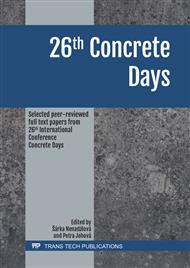p.3
p.8
p.14
p.21
p.26
p.31
p.38
p.44
The Use of Fly Ash in the Production of Concrete and Products Based on it
Abstract:
Reftinskaya state district power plant owned by Enel company and located in Russia produces up to 5 million tons of fly ash and slag annually when burning multi-ash coal of the Ekibastuz basin. A new system of dry ash removal works at the power plant; it includes the laying system of wet ashes and slags on the dump and the discharge system from the silo storage facility up to 1 million tons of ash per year. The chemical-mineral and grain composition data, properties and their correspondence to Russian standard 25818 in order to use ash in the production of concrete and products based on it are presented. The experience of production and application of autoclaved aerated ash concrete of reduced density is considered. It is shown that fly ash of Reftinskaya state district power plant is an effective substitute for quartz sand in the technology of cellular concrete. Its application opens up additional opportunities for aerated concrete with a density of 300-400 kg/m3 production. To optimize the structure and properties it is proposed to introduce an additive of natural gypsum in the amount of 3-5 % of the mass of dry components into the autoclave aerated concrete. The produced aerated ash concrete had a thermal conductivity of 0.075-0.100 W/m∙K which allows it to be used for erection of single-layer enclosing structures without additional insulation. Fly ash can also be used as part of heavy and fine-aggregate concrete replacing a part of Portland cement and sand. The addition of ash in an amount of up to 25 % by weight of cement improves the workability and reduces the demixing of the concrete mix. Ash introduction up to 10 % increases the compressive strength of concrete at an early time and after 28 days of normal hardening, an increase of it up to 25 % decreases the compressive strength, reduces the conductivity, but increases the shrinkage of concrete. The optimum ash content up to 100 kg/m3 for steamed concrete and not more 50 kg/m3 for normal hardening concrete. Compliance with the optimal composition and technological parameters of the production of concrete structures using ash enables to produce concrete of F200-F300 grade by frost resistance.
Info:
Periodical:
Pages:
8-13
Citation:
Online since:
August 2020
Authors:
Keywords:
Price:
Сopyright:
© 2020 Trans Tech Publications Ltd. All Rights Reserved
Share:
Citation:


